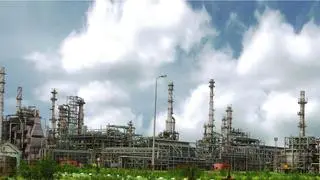Pawan Goenka, MD and CEO of Mahindra & Mahindra, will be retiring after more than two decades with the company. Goenka has spearheaded the company through many landmark decisions and changes, including product launches like the Thar, XUV 500, Scorpio and Bolero, as well as numerous new joint ventures and investments. In an interview with BusinessLine , Goenka speaks about his journey. Excerpts
In 93, you left Detroit and joined Mahindra. What made you move back to India then?
I saw an advertisement in an Indian newspaper in the US. An Indian automotive company was inviting Indian engineers to come home. And I was about to throw that paper in the dustbin and then suddenly I looked at that and I asked my wife, “See this, shall we?” and she said, “Let’s do it.” It took several years of convincing ourselves that we should go back. But that advertisement triggered it. About the same time there was this ghazal by Pankaj Udas, ‘Chitti ayi hai’ (the letter has come). And that was so touching for any Indian who was living outside India.
And at that time, frankly, we didn’t really get too concerned about how much I’m getting paid from what I was getting in Detroit, or where I will be working, who I’ll be reporting to, what my career path would be. At that time, it simply was, the Indian auto industry is opening up, there’s a place for somebody to come in and be able to make a difference. I would have to admit that when I first went to R&D Nashik, I did get the shivers. I wondered From here, would we be really able to compete with the big boys? But that's what made it so challenging. And I was given a blank cheque by Anand Mahindra to put everything in place.
You have led many changes within M&M. What really worked for you?
The timing of when I moved here was just perfect. Because 1993 is when the Indian automotive sector and the Indian economy were opening up. Mahindra was one of the companies that had decided that we are not going to play second fiddle, we are going to invest in R&D, invest in product and really be up there to be able to play and match with the big boys. So if I had come back in 1989-90 I probably would have been disappointed and gone back. And if I had come back in 1996-97 it may have been too late, someone else might be sitting there and would be doing what I was planning to do. My coming to India and Mahindra’s decision to invest in R&D, the growth of the Indian automotive sector, all kind of happened together and that’s the reason timing worked out perfectly for me.
In the last 27 years at Mahindra, you led a lot of innovations. Which of these do you think you would read personally as the most significant in your journey?
Everything has a place. Clearly, the product that gets the maximum sort of eyeballs in terms of what transformed Mahindra is the Scorpio. If you look at which product has sold the maximum it’s the Bolero. Then if you look at which product had actually made Mahindra, move up the value chain, it’s the XUV 500. And if you were to say which product has probably generated maximum profit for Mahindra, it is probably the Pick-Up. But for me the answer is XUV 500. Bolero was actually an experiment, an experiment that we had no clue will pay the kind of dividend it gave. And since we had invested very little in Bolero, even if the product had failed, it wouldn't have made a difference.
Scorpio was obviously a big bet. What I would say is that we were nervous and we didn’t know what will be a success. Whether the success will be to sell 1,000 vehicles, 2,000 or 5,000 vehicles, we didn’t know. But by the time we came to XUV 500, we had kind of established ourselves. Then it was about proving that we were not just lucky with the previous Scorpio or Bolero, that we can consistently develop winning products and move up the value chain. Therefore I was perhaps more nervous about XUV 500 because it was a test of our consistency rather than just getting it right.
Your critics say that you tried to stretch yourself too thin and try to excel in multiple areas. Do you agree?
Let me first start off by admitting that the critics are not entirely wrong. May be we did do too many things. Maybe the success that we had in a lot of things that we did, made us bolder, and more adventurous to get into many more things. Maybe we would have decided not to do a couple of things and be able to do the things that we did a little better. And in some sense, that's what we're doing now. By getting out from a few things and being closer to our core, and ensuring that we are able to do justice to these things. But if you were to ask me when we did it, if it made sense? My answer would have been a very emphatic yes.
One of the things that went wrong was the Ssangyong JV. What happened here?
It's a very sensitive subject. In the next few days, we would know whether the investor would sign up or not. Everything that we said about why Ssangyong was the right thing for us to acquire, I will still stand by each one of those statements. It was a perfect marriage. If I was to go back to 2011 and know what happened in the next 10 years, and start over again, I'll do many things differently.
Where would you like to see Mahindra a couple of years down the line?
The best of Mahindra is in front of us, not behind us. And what will define the best of Mahindra is how Mahindra is seen outside? In two years our market share in UVs is going back to 20 plus. And if the three products that we have — Thar has already succeeded, and if the other two ( Z101 and W601) also have a similar fate, then we will get there.
The second thing that has to change is that many of our international subsidiaries now are turning around. If (in) the next year or so, we're clearly able to demonstrate that now the worst is behind us. So I think in one year or two years we would have the confidence that people will see from the outside that Mahindra’s international subsidiaries, especially with Ssangyong out of the way, are value additive. Once you achieve that, then we can get on to more aggressive sort of initiatives to take the company to the next level of growth.
What next for you personally?
Clearly not get tied to one thing, and explore many different things and experiment with things. The most exciting thing for me right now is the engagement that I have with the Government of India. And that's a very exciting project and allows me to take my learnings of the last 40 years in the automotive and tractor industry, and apply those to many other industries that have not quite achieved the same level of atmanirbharata. I want to keep one-third of my time to myself and my family.








Comments
Comments have to be in English, and in full sentences. They cannot be abusive or personal. Please abide by our community guidelines for posting your comments.
We have migrated to a new commenting platform. If you are already a registered user of TheHindu Businessline and logged in, you may continue to engage with our articles. If you do not have an account please register and login to post comments. Users can access their older comments by logging into their accounts on Vuukle.